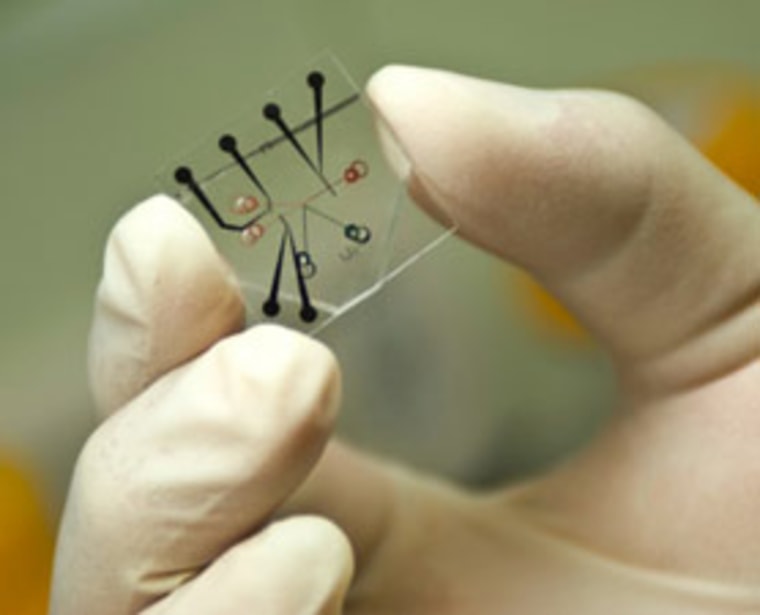Water may kill a computer chip, but a new water purifier inspired by computer chip technology could save millions of lives.
Developed by scientists at the Massachusetts Institute of Technology, the new water purifier uses magnetic fields to separate harmful contaminants and produce clean water. Scaled up and mass produced, the new technology could save millions of lives in developing countries by preventing the transmission of water-borne diseases.
"This can remove bacteria and other particles from seawater and brackish water without suffering any clogging issues," said Jongyoon Han, a scientist at MIT and co-author of the Nature Nanotechnology article that describes the new purifier. "This won't be a big deal in the U.S. But in places like India, where the water is brackish and getting saltier, this could be important."
The new water purifier is small, about the size of a postage stamp. Borrowing computer chip fabrication techniques, the MIT scientists made the chip from soft silicone, rather than hard silicon.
Except for a handful of Y-shaped dark slashes, the new device is also clear. The dark slashes in the silicone are actually very small microchannels. Dirty water goes into one channel and quickly encounters a strong magnetic field. Any object that has a positive or negative charge, which includes everything from dissolved salt ions to entire bacteria, is pushed on way. Clean water, which does not have a charge to it, flows the other way.
During a recent test, the new purifier removed 99 percent of contaminants from a test mixture of North Atlantic seawater, blood, proteins and small plastic particles. Because contaminants are pushed away from the membrane, instead of being drawn through the membrane, the device will not clog.
The new technique can so far only purify tiny amounts of water; a single channel cannot produce practical amounts of potable water. During the next two years, the MIT scientists plan to scale up their device with 16,000 channels squeezed onto an eight-inch wafer. It would use about 60 watts of electricity from a solar panel and could purify water as quickly as a Brita pitcher.
That's enough water for a small family, but it doesn't come close to the levels that commercial reverse osmosis desalination plants can purify, said Han.
That's fine with the MIT researchers. They envision their new device, powered by a solar panel, purifying water in developing countries and reducing the number of deaths from water-borne diseases like cholera.
"I'm pretty enthusiastic about it," said Mark Shannon, a professor at the University of Illinois, Urbana-Champaign. "You'd have thought scientists had come up with all the ways to desalinate water, but this is a totally new way to do it." Shannon agrees that the technology won't replace large scale reverse osmosis desalination plants, but could be an ideal way to provide clean water to areas that otherwise wouldn't have it.
